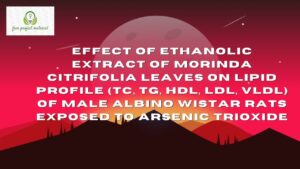TABLE OF CONTENTS
Title page- – – – – – – – – – i
Certification- – – – – – – – – ii
Dedication- – – – – – – – – – iii
Acknowledgements- – – – – – – – iv
Table of contents- – – – – – – – – v
CHAPTER ONE
1.0 Introduction – – – – – – – – 1-3
CHAPTER TWO
2.0 Immunological Aspects of Schistosomiasis – – – 4-5
2.1 Introduction of Schistosomes/Immunosuppression – – 5-6
2.2 Introduction to Human Host – – – – – 6-8
2.2.1 Initial Penetration – – – – – – – 8-11
2.2.2 Immunosuppression by Schistosomula in the Lungs – 12-15
2.2.3 Mode of Action of Adults Schistosomes – – – 15-21
2.2.4 Action of Schistosome Eggs – – – – – 21-25
CHAPTER THREE
3.1 Human Immune Responses during Schistosomiasis – – 26-28
3.2 Immunology of Morbidity and Regulation of
Morbidity in Humans – – – – – – 28-32
3.3 Immunology of Resistance to Reinfection in Humans – 32-35
3.4 Immunodiagnostic – – – – – – – 35-37
CHAPTER FOUR
4.0 SUMMARY AND CONCLUSION
4.1 Summary – – – – – – – – 38-39
4.2 Conclusion – – – – – – – – 39
References
CHAPATER ONE
1.0 INTRODUCTION
Schistosomiasis, or bilharzia, is a disease caused by trematodes of the genus Schistosoma that afflicts at least 243 million people (Chitsulo et al., 2004). Adult male and female worms mate and produce fertilized eggs in veins of their human hosts, where they live for an average of between 3–10 years, with longevity records extending for several decades. The eggs are excreted into the environment either in faeces or urine or are retained within the host where they induce inflammation and then die. Eggs that reach fresh water hatch and release free-living ciliated miracidia, which, if they infect a suitable snail host then reproduce asexually through mother and daughter sporocysts, producing thousands of cercariae which are released into the water and are infectious for humans. Cercariae penetrate through the skin and over 5–7 weeks migrate and mature to egg-producing adult male or female worms. Mature eggs, whether excreted or retained in the body, only live for 1–2 weeks. People can be infected by three main species of schistosomes: Schistosoma haematobium, S. mansoni and S. japonicum. Each species has a restricted range of appropriate snail hosts, so their transmission distribution is defined by their host snails habitat range. Adult worms live within either the perivesicular (S. haematobium) or mesenteric (S. mansoni, S. japonicum) venules. Schistosomes cannot excrete waste products, but rather regurgitate them into the blood stream. Some of the vomitus products are antigenic and are the basis of diagnostic assay.
In areas endemic for schistosomiasis, in the absence of intervention, it is primarily a chronic disease lasting decades. This results from people being repeatedly exposed to cercariae and the longevity of adult worms. In these areas, a child’s first infection often occurs by age two or three with the burden of infection increasing during the next 10 years as new worms successfully colonize the child’s blood vessels (Verani et al., 2011). Typical age prevalence and age intensity curves from all endemic areas show the highest prevalence, and intensities of infection are found in young adolescents. After that, they either level off or more commonly decrease to much lower levels in adults. Transmission patterns in highly endemic areas commonly show that 60–80% of school-age children are infected, while 20–40% of adults remain actively infected (Stollhard et al., 2011).


